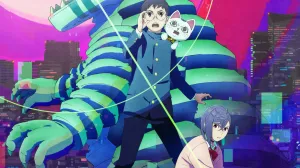A new composite featuring photos taken from the James Webb Space Telescope and the Chandra X-ray Observatory is yielding some stunning results. Earlier this month, NASA officials shared the composite image of the Tarantula Nebula, some 158,000 light-years from Earth. With its blue and red hues, the image is nothing short of breathtaking as it shows the cosmic spectacle in its fullest.
Videos by ComicBook.com
The exact location is of 30 Doradus, a galaxy located in the Large Magellanic Cloud, serving as a neighbor to our own Milky Way. Using the X-ray images taken from Chandra, NASA officials used Webb’s cutting-edge infrared technology to capture higher resolution images to lay over the other snapshots. The end result, well…you can see for yourself below.
“The infrared data from JWST (red, orange, green, and light blue) show spectacular canvases of cooler gas that provide the raw ingredients for future stars. JWST’s view also reveals ‘protostars,’ that is, stars in their infancy, just igniting their stellar engines,” NASA says of the image. “The chemical composition of 30 Doradus is different from most of the nebulas found in the Milky Way. Instead it represents the conditions in our galaxy that existed several billion years ago when stars were forming at a much faster pace than astronomers see today. This, combined with its relative proximity and brightness, means that 30 Doradus provides scientists with an opportunity to learn more about how stars formed in our galaxy in the distant past.”
What is the Webb Space Telescope?
In short, the Webb observatory is the successor to the Hubble Space Telescope. Using its new technology, scientists have been able to examine parts of the known universe previously unobservable.
“If you think about that, this is farther than humanity has ever moved before,” NASA administrator Bill Nelson previously said of the JWST. “And we’re only beginning to understand what Webb can and will do. It’s going to explore objects in the solar system and atmospheres of exoplanets orbiting other stars, giving us clues as to whether potentially their atmospheres are similar to our own.”
“Our goals for Webb’s first images and data are both to showcase the telescope’s powerful instruments and to preview the science mission to come,” astronomer Klaus Pontoppidan, Webb project scientist at STScI, added of the images. “They are sure to deliver a long-awaited ‘wow’ for astronomers and the public.”
For additional space and cosmic stories, check out our ComicBook Invasion hub here.








